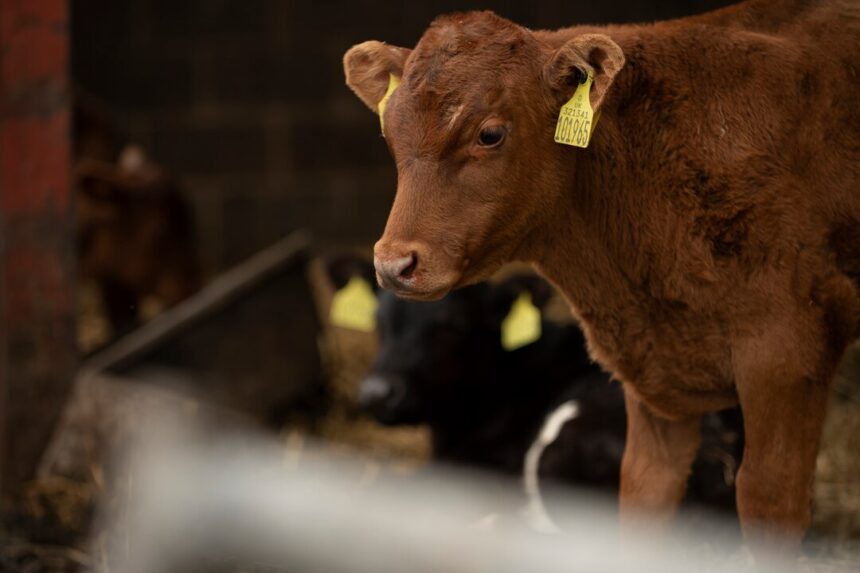Santa Gertrudis cattle, known for their adaptability, hardiness, and superior meat quality, have gained popularity among cattle farmers worldwide, including South Africa. Originating from the United States, Santa Gertrudis cattle have proven to thrive in various environmental conditions, making them well-suited for South Africa’s diverse farming landscapes. In this article, we’ll explore ten crucial insights into breeding and farming Santa Gertrudis cattle in South Africa, shedding light on their unique characteristics, management practices, and the benefits they offer to the agricultural industry.
- Historical Background:
Santa Gertrudis cattle were first developed in the early 20th century on the King Ranch in Texas, USA, through a crossbreeding program between Shorthorn and Brahman cattle. The breed was specifically bred for its heat tolerance, adaptability to harsh environments, and superior beef quality. - Distinctive Characteristics:
Santa Gertrudis cattle are characterized by their distinctive red coloration, sleek coat, and muscular build. They possess traits inherited from both parent breeds, including heat tolerance, disease resistance, and efficient feed conversion, making them well-suited for extensive grazing systems prevalent in South Africa. - Adaptability to Environmental Conditions:
Santa Gertrudis cattle are highly adaptable to various environmental conditions, thriving in both tropical and subtropical climates. Their ability to withstand heat, humidity, and variable weather conditions makes them well-suited for extensive farming operations across South Africa. - Meat Quality and Production:
Santa Gertrudis cattle are renowned for their superior meat quality, characterized by its tenderness, marbling, and flavor. The breed’s genetics contribute to the production of high-quality beef, meeting the demands of both domestic and international markets. - Breeding Programs and Genetics:
Selective breeding programs have been instrumental in improving Santa Gertrudis genetics in South Africa, focusing on enhancing beef quality, growth rates, and overall herd performance. Breeding strategies aim to produce cattle with desirable traits while maintaining genetic diversity and adaptability to local conditions. - Grazing Management:
Effective grazing management is essential for optimizing Santa Gertrudis cattle productivity and maintaining pasture health. Rotational grazing, strategic pasture rotation, and careful stocking rates help prevent overgrazing, improve forage utilization, and promote sustainable land management practices. - Health and Disease Management:
Proactive health and disease management protocols are essential for ensuring the well-being of Santa Gertrudis cattle herds. Vaccinations, parasite control, and regular veterinary care help prevent common cattle diseases and maintain herd health and productivity. - Reproductive Efficiency:
Santa Gertrudis cattle exhibit excellent reproductive efficiency, with cows typically calving unassisted and displaying good maternal instincts. Breeding programs focus on optimizing fertility rates, calving ease, and calf survival to ensure sustainable herd growth and productivity. - Market Demand and Economic Viability:
The superior meat quality and adaptability of Santa Gertrudis cattle make them economically viable for beef production operations in South Africa. With growing demand for high-quality beef, Santa Gertrudis farming presents lucrative opportunities for cattle producers seeking to capitalize on the thriving meat market. - Sustainability and Environmental Stewardship:
Santa Gertrudis cattle farming in South Africa aligns well with sustainable agriculture principles, promoting environmentally friendly practices such as rotational grazing, biodiversity conservation, and soil health management. By prioritizing land stewardship and ecosystem health, Santa Gertrudis farmers contribute to the long-term sustainability of the agricultural sector.
Breeding and farming Santa Gertrudis cattle in South Africa offer a host of benefits, from superior meat quality to adaptability and economic viability. By leveraging the breed’s unique characteristics and implementing sound management practices, cattle producers can harness the full potential of Santa Gertrudis farming, contributing to food security, rural development, and economic growth in South Africa.
Join 'Farmers Mag' WhatsApp Channel
Get the latest Farming news and tips delivered straight to your WhatsApp
CLICK HERE TO JOIN






